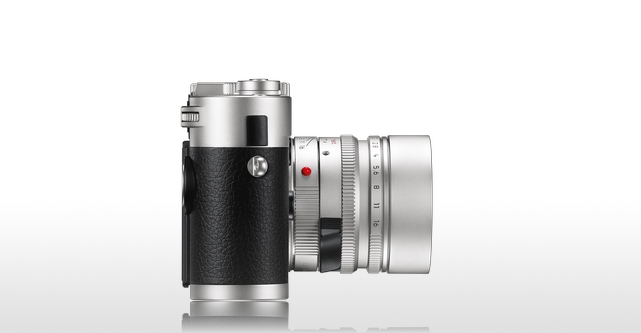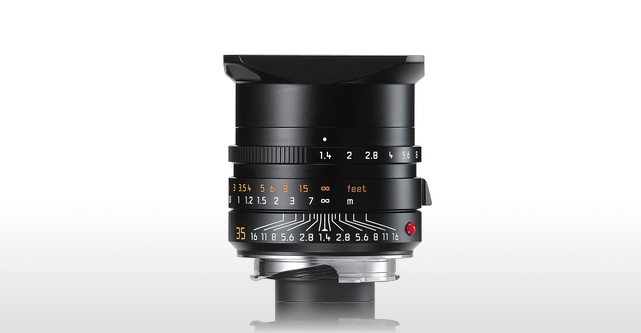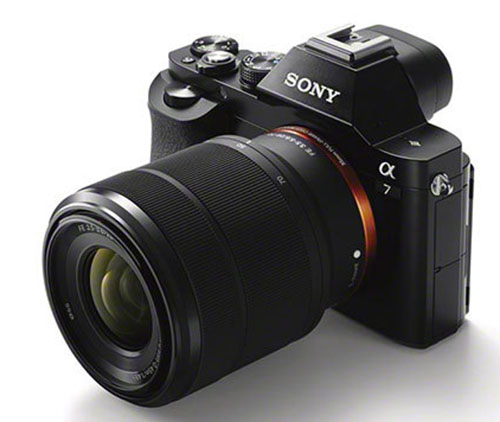SEE FURTHER COMMENTS JANUARY 2014
Read more Macfilos camera reviews
You might have found your way to this article expecting to read about the new Sony A7s because when I wrote the piece in 2013 I was not to know there would be an “s” version in the future. The heading of this story is therefore confusing–it was originally intended as the plural of A7 to refer to both A7 and A7r.
Sony’s A7 system cameras are hot property. This is the first mirrorless full-frame camera with interchangeable lenses (other than the Leica M, strictly a rangefinder rather than a mirrorless) and is big news for photographers. Not surprisingly, much of the excitement has been concentrated on the use of non-Sony lenses on this advanced electronic device. Leica enthusiasts, in particular, are agog with anticipation. How will their lenses, old and new, perform on this tiny wonder from Japan?
At first take the A7s open up a fairyland of opportunity for owners not only of Leica glass but of all M-mount lenses including those from Zeiss, Voigtländer and others. The M-mount was introduced by Leica 59 years ago and the vast majority of lenses bought since 1954 can be bolted on to a modern digital camera with the aid of an adaptor. Easy peasy, you might think.
Tantalising
It’s a tantalising thought. There are some great old lenses out there and they are still capable of producing wonderful results. It would not be an exaggeration to say that many of these classic lenses can out-perform modern system camera optics at a fraction of the cost.
Using M-mount lenses on modern cameras is no new thing. Over the past two or three years Leica glass has been attached to almost anything with a decent sensor. I realised this last year when I wrote about using my modern lenses on the new Fuji X-E1. It has been the most-read post on Macfilos and, even after a year, it often tops the readership charts. Since I wrote that article, with the naivety of the newcomer, I have learned a lot and I now know that there are many considerations and pitfalls in the use of such third-party glass.
Since the announcement by Sony the internet has been bursting with conjecture on the advantages and disadvantages of mounting M lenses. A thread I started on the popular a popular Leica forum, has been merged with at least one other on the same subject and has become the most popular current debate. Opinions have gone back and forth, often off-topic as is the norm with these things, but the basic message is that mounting Leica lenses on the Sonys is not as straightforward as many think.
On the one hand we have the purists who believe that Leica lenses are made to work with Leica cameras and none other will do. They can get tetchy and will trot out all manner of horror stories to underpin their arguments. At the other extreme are the optimists, those keen to try new things, who have ordered an A7 or 7r in the belief or hope that there will be few problems.
Whatever your views, there is no denying there is keen interest out there in the wild. All things being equal, there is much sense in using M-mount lenses on these new Sonys. The fact that the first FE (full-frame E-mount) lenses introduced alongside the A7s have had a lacklustre reception has only fanned the flames. If you want a world-beating 35mm or 50mm f/1.4 prime on your new Sony, where better to look than one of Leica’s finest Summiluxes, irrespective of age?
The main theme of this article is the use of M-mount lenses on the full-frame Sonys. However, Leica did make a separate range of full-frame lenses, used by the R single-lens reflex cameras, including a couple of well-regarded zooms. Until recently they have been very cheap. They are cheap no longer because they are being snapped up by owners of the new live-view Ms. They will also be in demand for use with the Sonys, with a suitable E-R adapter. R lenses are unlikely to present any problems to owners of the A7 and 7r.
But back to M-mount. Let’s have a look at some of the arguments for and against M glass on non-Leica cameras.
Manual Focus
That we are having this discussion is down to one thing: Manual operation. M-mount lenses have always been focused manually, right back to the first days in the early 1950s, and all require manual setting of aperture. There are no electronics, no fiddly little motors to set aperture or lock on focus. Rangefinder cameras have only ever used manual focus and, indeed, Leica owners will tell you that it is far better than using autofocus. Masochistic as it may sound, I tend to agree with that view. There is something magical and involving in achieving spot-on focus at any desired point on the frame and many experienced rangefinder fans will tell you it is actually quicker.
Because M lenses are purely mechanical, they last and last and last. I am often reminded of the advertisement for a famous Swiss watch manufacturer which suggests that in buying one of its products you are merely looking after the watch for a future generation. It’s like that with Leica lenses.
While some see manual focus as old-fashioned and undesirable, anyone who has used a rangefinder recognises this simplicity as an advantage rather than disadvantage. For one thing, these manual lenses are mostly tiny when compared with modern electronic full-frame glass. In fact, Leica lenses compare more in size with micro-four thirds lenses.
The second advantage lies in the short-travel and ultra precise focus ring. Most M lenses have a maximum travel of about 40 degrees. Modern system lenses with their fly-by-wire control often demand several turns from near to infinity when used in manual mode. This is a deeply unrewarding experience and accounts for some of the negative image of manual focus. On the other hand, the precise mechanics of M lenses leads to several advantages.

Focus is quick on M lenses but it doesn’t end there. They are ideally set up for zone focusing, particularly those lenses fitted with a finger lever (including the 35mm Summicron and both the 35mm and 50mm Summiluxes). The lever enables one-finger focus but also helps indicate the focus distance by its position. With a lens of 35mm or wider and an aperture of f/8 or smaller, optimum hyperfocal distance is often achieved simple by pointing the heel downward at six o’clock, in the centre of travel. It’s easy to move it to far left (4 o’clock) for infinity, if needed, or far right (8 o’clock) for very near subjects. The rest of the time, six o’clock (which you soon get to recognise from feel) is about right for street photography. The depth-of-field engravings on M-mount lenses offer another big advantage over autofocus lenses. You can learn to rely on this scale to calculate how much of the subject will be in focus at any given aperture. Obviously, the wider the aperture the narrower this depth of field.
Finally, we come to sheer satisfaction. Despite the quest for ever-faster autofocus, there is something involving and satisfying in manual focus. For one thing, it allows more precise homing in on a subject. Auto focus doesn’t always lock on to the subject as you would wish and, in this respect, manual focus can offer precise control without having to fiddle with dancing your focus points around the screen.
Value for money
M-mount lenses, particularly the latest models, are expensive. But they can represent the best investment you could make in photography. Unlike electronic camera bodies and modern electronic lenses, these mechanical masterpieces will still be in demand long after most of us have ourselves become un-mounted. These lenses tend to keep pace with inflation and, unless Leica turns itself into a sweat shop and floods the market, values will continue to rise.
This is important when deciding on a system in which to invest. It is currently a bewildering world for the photography enthusiast. All the major players, including Nikon, Canon, Sony, Fuji, Panasonic and Olympus have their own proprietary mounts, none of which (except in the case of Micro Four Thirds lenses) are compatible with one another. And even if you do rely on adapters, modern electronic lenses often lose functionality when mounted on a different camera system. Some cannot be focused manually. That is why owners get stuck with one brand. After investing in an arsenal of Nikon lenses it is hard to bite the bullet and change to Canon, however alluring the new model.
Those who invest in mechanical M-mount lenses have none of these worries. Their lenses sail on serenely across the seas of time, appreciating in value all the while, and can be bolted on to a wide range of systems, present and future. As long as you can live without autofocus and automatic aperture setting, a collection of M glass will see you out.
Then we have optical performance to add a bit of froth to the coffee. While optical performance has been improved gradually over the past sixty years, the fact is that most M lenses offer superb performance even today. The are all primes, of course, and this generally means better optical performance, better than that of modern kit zooms for instance. If the lenses have been well looked after physically they will perform as they did when new.
Crop factor
For the first time M lenses can be used on a non-Leica digital camera as nature intended, at their advertised focal length. With the new Sonys a 35mm is a 35mm wide angle, a fifty is a fifty and so on throughout the catalogue of lenses, ancient and modern. Up to now there have been focal-length consequences to using M glass on non-Leica digitals. These compromises are arguably more worrisome than the ultimate pixel-peeping optical performance of a lens.
Up to the arrival of the A7s, the best you could expect was the 1.5 crop factor of the APS-C sensor where that 35mm becomes a 50mm (actually around 52mm), a 50 becomes a 75 and so on. A 24mm Leica lens is needed to achieve the street tog’s holy grail of 35mm equivalent with an APS-C sensor. For Micro Four Thirds owners the sacrifice is even greater. With the crop factor of 2, even a 35mm lens becomes a medium tele of 70mm. And Leica lenses are no more than an academic exercise when married to Nikon’s CX system with its 2.7 crop factor.
All this explains why there is so much interest in using M-mount lenses on the full-frame Sonys.
Bodies v lenses
We have already seen that mechanical optics from Leica, Voigländer, Zeiss and others can hold their value and, even, appreciate over time. There is no digital rot as there is with modern electronic lenses. There is no control system that will come along that is superior to your fingers.
With camera bodies it is a different matter. Digital rot is a major factor and, unfortunately for Leica, their expensive bodies offer themselves up for a lot of rot. The new M is built largely from brass and high-quality magnesium alloy and is a masterpiece of craftsmanship, made in an expensive country. It will be around for decades and will continue to sell to collectors long after the internal electronics have withered into obscurity. But initial depreciation is undeniably heavy.
The Sony A7 will almost certainly depreciate at a faster percentage rate than a Leica M. But, on the other hand, the actual cash amount of loss will be much lower because the camera starts off at one third of the price of the Leica (even in the case of the more expensive, 36MP A7r). As electronics become more complex and as bodies offer more facilities, they will increasingly become disposable commodities and this does not bode well for Leica. The camera body is fast becoming a temporary bolt-on for the lens. So why spend a fortune?
Leica is in a difficult position. The M is built like a tank, just like Leica film cameras, and it is very expensive thanks to the labour-intensive nature of production. While enthusiasts will pour money into lenses (which is good for Leica), many photographers see the wisdom in using a more disposable, much cheaper body with their stock of M lenses. Enter the A7s and soon, surely, cameras from other manufacturers.
You can understand Leica’s dilemma. The manual-focus M is based on the tried and tested rangefinder system. I love rangefinders and there really is nothing like focusing an M. Everything works in harmony and experienced users can often beat auto focus in speed and accuracy, particularly when it comes to selective subjects. Tim Ashley makes this point eloquently in his article in which he says that a well-adjusted rangefinder can be more accurate than an electronic viewfinder in achieving spot-on focus.
Leica’s dilemma is the spectre of cannibalisation of the M. A true “mini M” with M mount and a built-in EVF instead of the rangefinder mechanism, would surely impact on sales of the more expensive camera. Purists will continue to argue that it cannot be an M because M stands for rangefinder (Meßsucher in German) so you cannot have an M with solely an electronic viewfinder. But if Leica were to produce such a cheaper M-system camera (whether an M or not an M) it would be welcomed, not just as a second body among Leica enthusiasts: It would encourage many to take the cheaper body and forego the traditional rangefinder.

Lens performance on Sony A7
Well, for starters, we don’t know for sure whether M-lens performance on A7s will be inferior in any significant way. It can be argued that the 36MP sensor of the A7r (compared with the 24MP of the M) will go a long way to compensating. Ron Scheffler has already been out with a bagful of lenses and done a torture test, with mixed results. Tim Ashley’s excellent appraisal of the situation raises more questions. I suspect, however, that while the experts will detect technical problems there will be a horde of M-lens owners out there who cannot wait to try the marriage out for themselves. They are likely to be pleased. In my view any problems with lenses longer than 28mm will be minimal. Much of the forum comment concerns wide-angle Leica glass. But the mere fact that an old Leica lens can be bolted to an A7 and be used at advertised focal length is an achievement in itself.
Read this: A bargain basement Leica zoom for the Sony A7
Naysayers have pointed out the many pitfalls. Leica lenses are tailored to Leica cameras and it is impossible to achieve this synergy with a third-party body; a variety of optical aberrations could spoil results; use of wider angle (over 28mm) lenses could be compromised, possibly with vignetting. And on and on.
Much talk, also, has centred on adaptors. Back in time I used to think an adapter, which is a simple ring of metal without optics, was just a means of mounting the lens. Not so. Tolerances are critical and some cheaper adaptors can loosen over time and, even, damage the camera or lens mounts. Forum members have complained that they have gone thorough umpteen models and variants before finding one that actually worked well. They talk of shimming with silver foil, all of which is far above my head and I will leave them to it.
Facts
Yet when all this is said, no one knows for sure how M lenses will perform on the Sonys and I am looking forward to seeing the results of some serious testing. We are looking for facts rather than conjecture. We will get this only after Sony release the finished product with final firmware, something that should happen within the next three weeks.
I am ever the optimist and I have ordered a Sony A7r body without lens so that I can try out my Leica optics in the real world. I still love the Leica M and, by choice, I would still prefer using an M body with Leica lenses. But it will be fascinating to see how modern Leica lenses perform on the Sony in a back-to-back comparison with the thrice-expensive M.
UPDATE: Lots of wonderful photographs of the new Sonys on SLRclub.com, even if you cannot read Korean.



I have the new A7R sitting right here beside me, yet I still don’t have an adapter to mount anything on it. A photographer without a lens, is there a worse hell?. I am anxious to try out my 15 Leica R lenses on it, as well as the hundreds of other lenses for other brands I have collected over the years. As to Leica’s aftermarket service, I had a friend with a broken M lens who sent it to Leica Solms. A 75 year old lens and they still carried the spare parts, fixed in a week including shipping time and not overly expensive either. Just goes to show the kind of dedication Leica has for its products in the future.
Thanks, Richard. I have the opposite problem–R and M adapters but no camera. I ordered an A7r from R.G.Lewis, one of the Leica dealers in London, and it was supposed to be here two weeks ago. It didn’t arrive before I left for China and it still isn’t here. R.G.Lewis are new Sony dealers but they have had no cameras while other dealers seem to have had plenty. It’s quite frustrating but I feel loyal to my dealer and don’t want to go off and get one elsewhere.
I agree with your point on Leica service, particularly in relation to old cameras and lenses. The only problems encountered are some unobtainable parts for early digitals, including the M8. I suspect this will be an increasing problem in the future. Anything mechanical, on the other hand, and Leica can help. Another aspect, again often overlooked, is that Leica will service and repair Panasonic Leica digitals going back to the early days (subject to parts availability) whereas it would be difficult to get this sort of backup from Panasonic.
nicely written but no actual content….
Why is the Leica M so expensive? The camera is 90% built in Portugal. German labour just fits the sensor and the leather covering.
You tell me. I suppose we like to think all that brass, the detail hand work and, of course, relatively low-volume, labour-intensive production adds to the cost. Also, despite many rumours to the contrary, I do find Leica after-sales service to be good and the investment in training programmes is a little bit of icing on the cake.
Nicely written and a fair assessment for M owners. But you should change the title of your essay to "Leica M lenses on Sony’s A7s" The real controversy concerns wide angle M lenses. Too often Leica becomes conflated with M rangefinders only. For 40 years Leica also produced excellent R cameras and lenses before orphaning the platform. For those of us with R lenses, there is no "controversy" nor should there be any wide-angle issues using R lenses on the new A7s with a proper adaptor like the Novoflex.
Thanks for your comments. Of course you are right and I ought to have been less sloppy with the title. Unfortunately I cannot change this now because it is part of the URL, but I can make it clear in the body of the article. I will do so. I also clearly haven’t made it sufficiently clear that problems lie mainly with wide angle M lenses and not with the bread-and-butter 35s and 50s. Your reminder about R lenses is also timely and is another aspect I failed to mention. I ought to have done so because I too have an R zoom on the shelf and am keen to try it when the official Leica finally arrives. Again, thanks for your valuable insight.